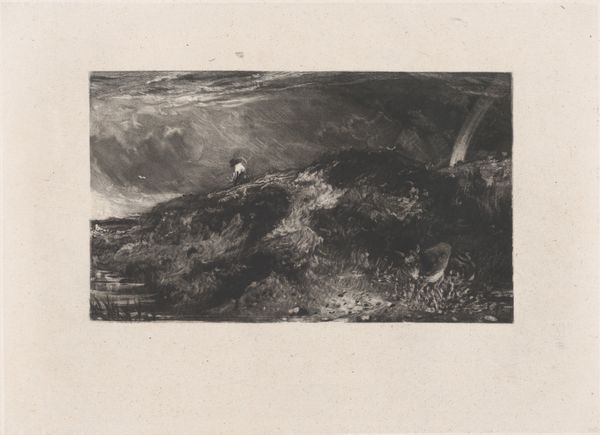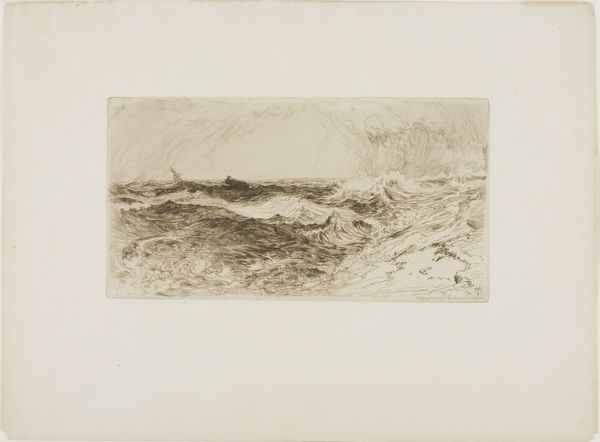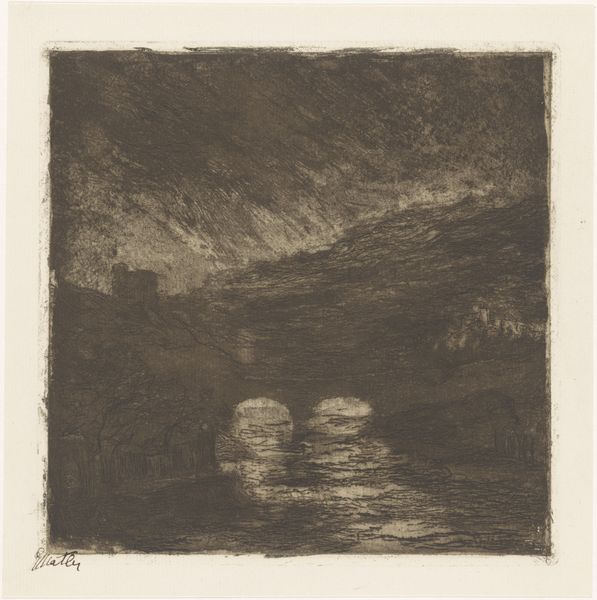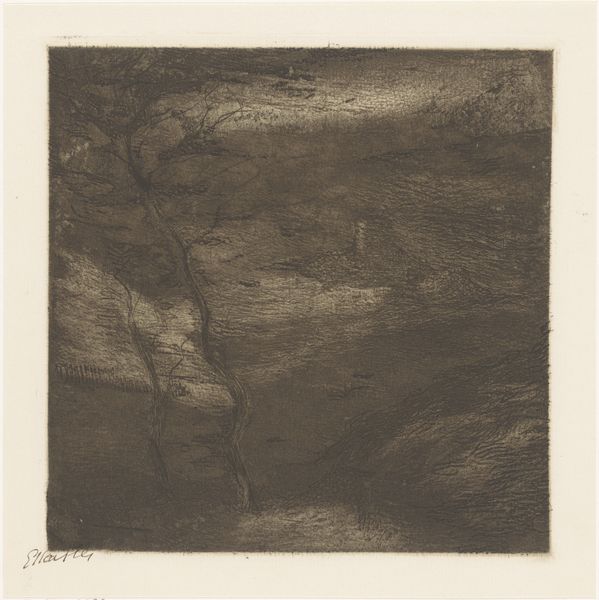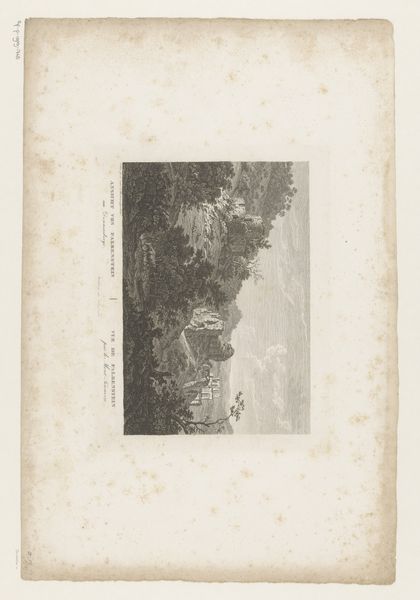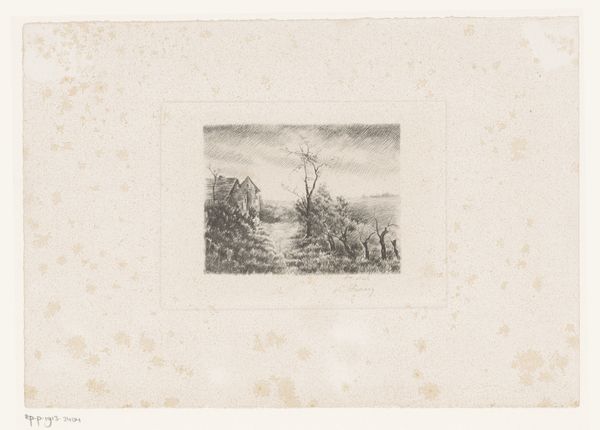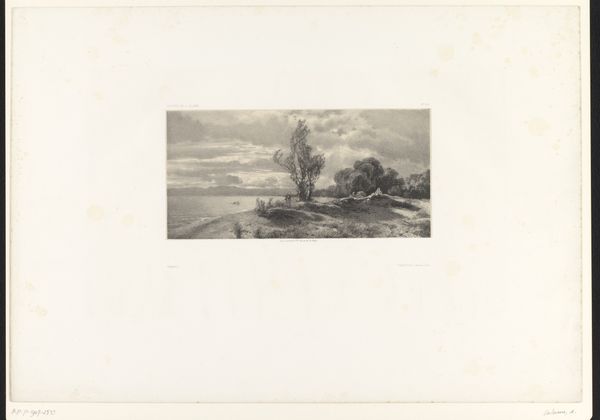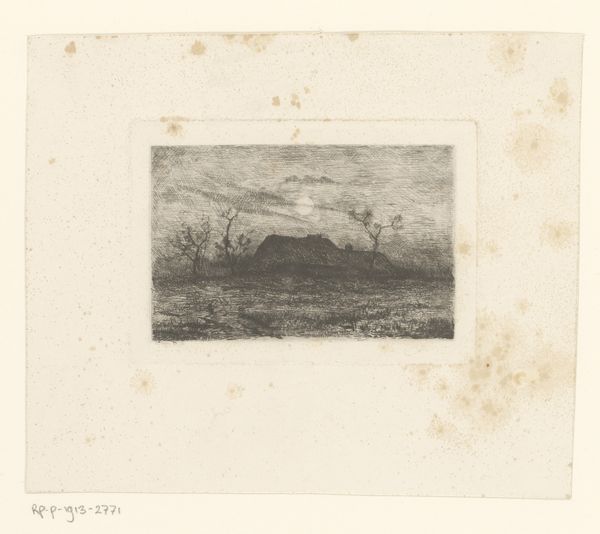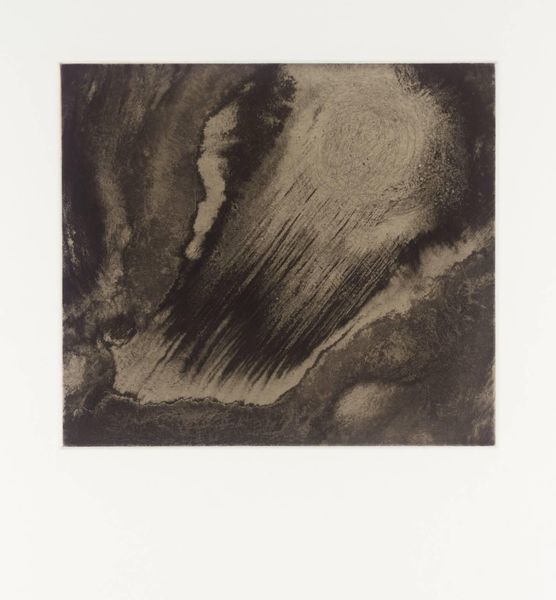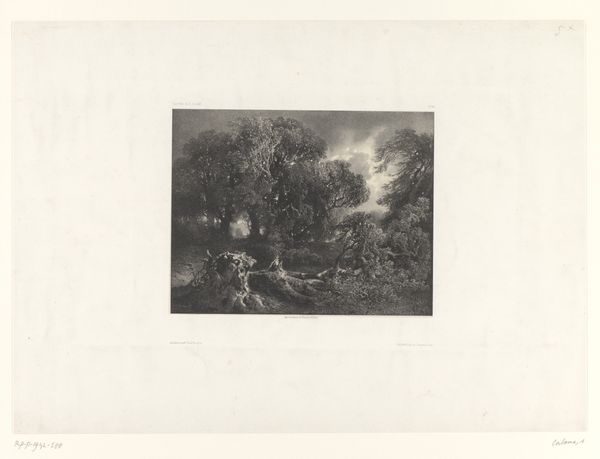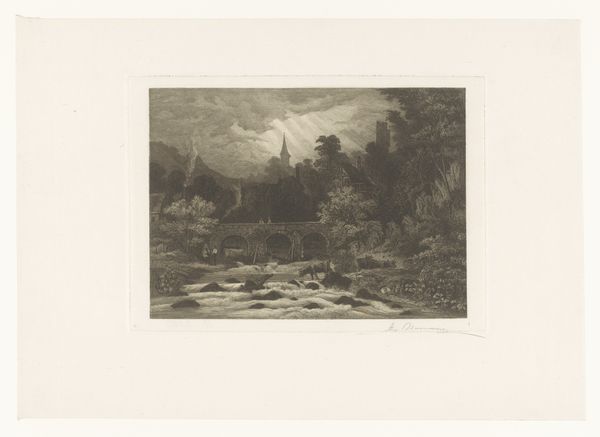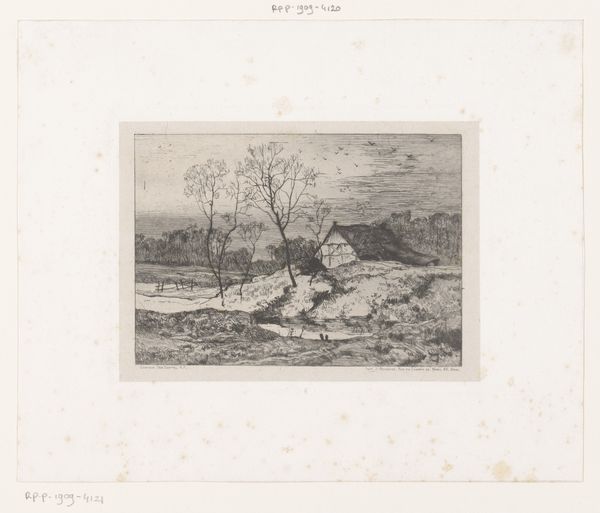
drawing, print, etching
#
drawing
# print
#
etching
#
landscape
#
romanticism
#
line
#
realism
Dimensions: Image: 3 1/4 × 6 1/16 in. (8.3 × 15.4 cm) Plate: 6 9/16 × 9 in. (16.7 × 22.9 cm) Sheet: 8 11/16 × 11 9/16 in. (22.1 × 29.4 cm)
Copyright: Public Domain
Curator: This etching by David Lucas, titled "Hampstead Heath", dates back to 1829 and is currently housed at the Metropolitan Museum of Art. What strikes you most about it? Editor: Its brooding intensity. The swirling clouds and windswept landscape seem almost alive. It feels raw and untamed, unlike the manicured landscapes often associated with the English elite. Curator: I agree. Lucas was working from sketches by John Constable, who deeply valued capturing the effects of nature's constant change. Considering this piece is a print, what do you observe about Lucas's handling of the medium? Editor: The intricacy is astonishing. Note the varied line work—some areas densely packed, creating deep shadows, and others light and airy. You can practically feel the wind whipping through the grasses. It’s a remarkable example of how printmaking can become an art of atmospheric and social commentary, pushing against more polished forms of painting. Curator: Absolutely. The etching process, using acid to bite into the metal plate, allows for a range of tonal values achieved by manipulating the application of stopping-out varnish. Think of the labor invested in realizing such subtle gradations across the entire plate. The final print, reproduced and distributed, brings this experience to a wider audience. It creates accessibility. Editor: That's a good point about accessibility. But in the context of early 19th-century England, I'm curious about who actually consumed prints like these. Were they affordable enough for the working classes, offering a vision of the land beyond the factories, or mainly for the bourgeois appreciating their version of nature? Curator: The pricing would have been a key factor in its accessibility, tied directly to Lucas’s workshop’s operational costs. Also, keep in mind the role of the Royal Academy, exhibition culture, and networks of patronage in legitimizing landscape as a critical form of art. This artwork becomes part of a wider dialogue surrounding taste and artistic production. Editor: Fascinating. "Hampstead Heath" provides much more than a scene. It delivers social and cultural data regarding production, distribution, and consumption to a broad audience of its time. Curator: Indeed. The landscape is never a neutral zone; instead, we find complex systems that tie production and making, consumption and society.
Comments
No comments
Be the first to comment and join the conversation on the ultimate creative platform.
